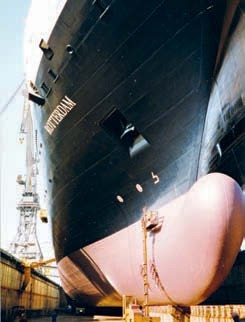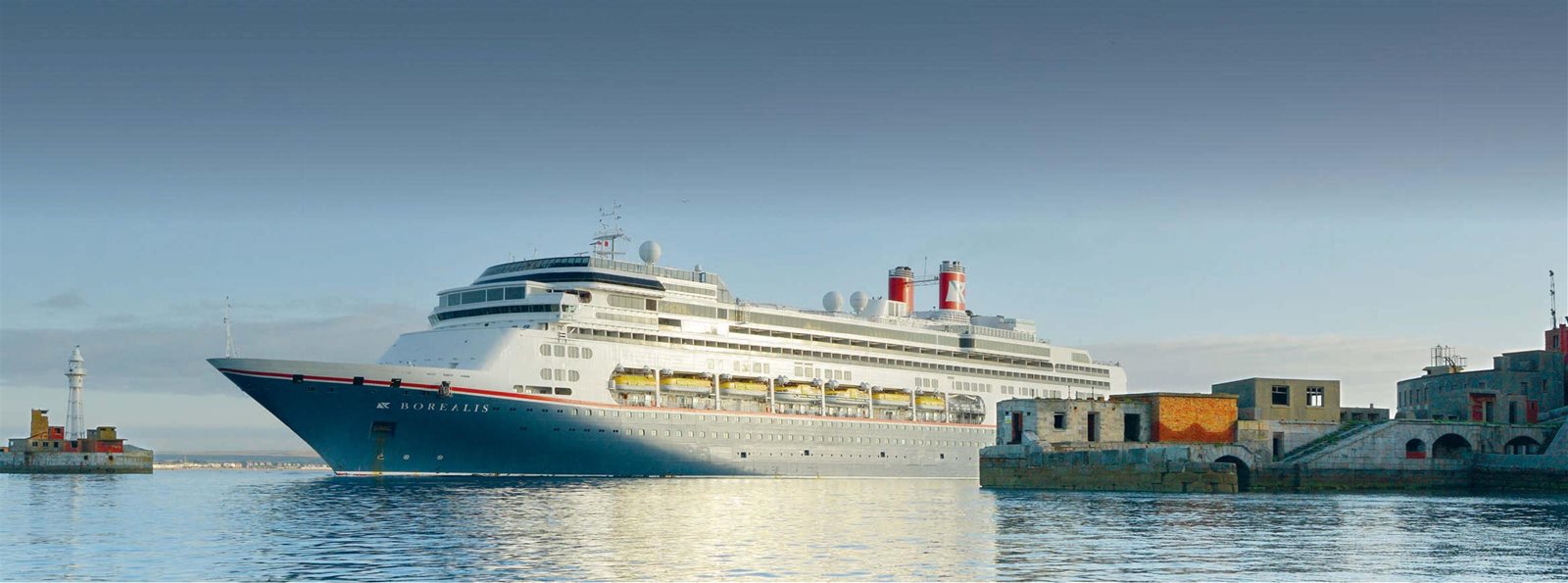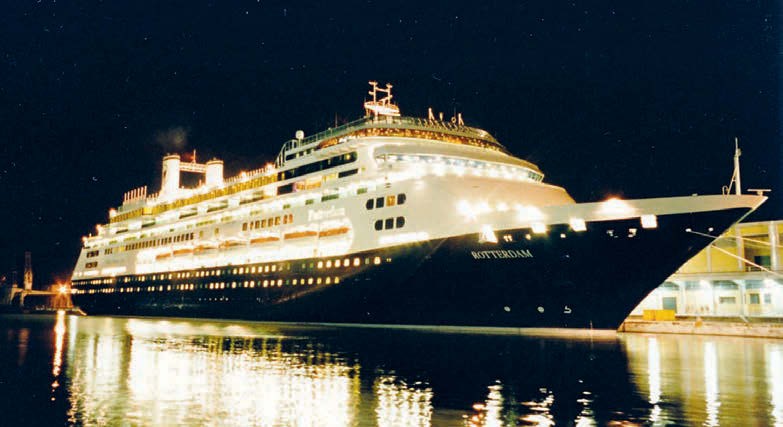
Rotterdam (VI)’s hull undergoes final touch up in drydock.

Fred. Olsen’s Borealis arriving into Portland in August 2021.
STEVE BELASCO
Those of us that work with ships, or know them well, recognise that some ships are blessed. They have an indefinable, enigmatic quality which we euphemistically call ‘a soul’. The Cunard liners Mauretania (1907), Queen Mary (1936), Queen Elizabeth 2 (1969) and Holland America’s Rotterdam V (1959) are noteworthy examples of ships that are perceived to have had ‘a soul’.
Having recently sailed aboard Fred. Olsen’s Borealis, I can attest that she is also worthy of being regarded with the same accolade. Conceived from the outset as a flagship to replace the much-loved venerable ‘ship of state’ Rotterdam (V), Rotterdam (VI) was imbued with modern facilities, a $2 million art collection with numerous ‘objets d’arts’, and a number of nods to her illustrious predecessor. I had the privilege of being her owners’ build Project Manager as Rotterdam VI.
Rotterdam VI entered service as Holland America Line’s flagship on 11 November 1997, but on 20 July 2000 she was acquired by Fred. Olsen Cruise Lines when Carnival Corporation chose to divest itself of 18 cruise ships in a rationalisation process, primarily to move towards bigger and more efficient ships, and partly in response to the Covid pandemic and the subsequent shutdown of the cruise industry. Fred. Olsen also purchased Rotterdam’s near-sister, Amsterdam, and the two were renamed Borealis and Bolette respectively.

Rotterdam (VI) at the Venice Cruise Terminal on the day of her delivery in 1997.
AUTHOR